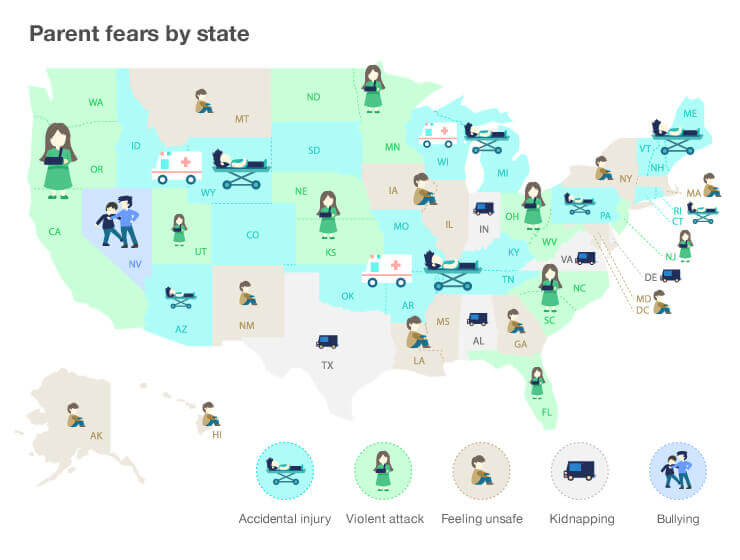Parents—Trust your instincts
While parents may sometimes worry about the wrong things, our research shows that parents’ fears are still often in line with the real threats their kids face. You’ve got a tough job, but understanding the dangers your kids are dealing with is the first step to keeping them safe.
What are your biggest parenting fears and how are you protecting your kids from those threats? We’d love to hear from you. Share your thoughts in the comments below.
*Other common parent fears are health-related and were not included in this survey: child obesity, smoking, drug/alcohol abuse, teen pregnancy, stress/anxiety and lack of physical activity.











